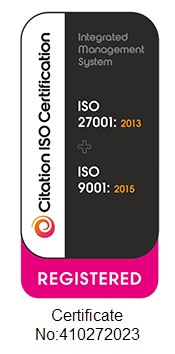THIS ARTICLE AT A GLANCE
CONTACT ETS
If you have any questions or would like to discuss further what you should be doing, ETS is here and willing to help.
Call 0117 205 0542
Email enquiries@energy-ts.com
Submit a contact form
CHECK OUR SERVICES
The Reality of Energy Management for Building Occupants

It is obvious to say that the condition of a building, and the behaviour of its occupants, plays a significant role in the ability of its facilities or energy manager to reduce energy waste.
However, property tenure and the range of stakeholders involved in any decision-making process at a particular property can often have an equal impact. Whilst the tenant can control their activities and behaviours in rented premises, the building services (i.e. the major energy consuming pieces of kit) are often under the landlord’s control.
It is widely recognised that energy management is highly challenging within the rental market – conflicting interests and split incentives are often identified as being the principal barriers to driving forward energy and carbon reduction projects.
As such, nuanced and tailored measures are necessary if the UK is to address these challenges and improve energy management within the rental market. The following discusses these issues in more detail and what options are currently available for building occupants to improve energy efficiency.
Energy Management: Leased vs Owner Occupied
According to BEIS, approximately 58% of non-domestic building stock is owner occupied in the UK – although in certain sectors (offices, hospitality, retail and storage sites), it is much more common for occupiers to lease properties than own them.
Given the typical barriers of split incentives (where the landlord pays for energy efficiency improvements, but only the tenant feels the benefit of reduced bills), it is unsurprising that these sectors contributed to the highest proportion of total non-domestic energy consumption during 2018 (BEIS, 2018) – whilst there will be many other factors at play, the difficulty of implementing energy efficiency projects in properties within these sectors will play a significant part.
Furthermore, owner occupied premises reported having a significantly higher proportion of consumption that was managed by a specialist energy manager compared with rented premises. This would suggest that, logically, organisations that own the buildings they occupy are more likely to invest in energy management, as they will be the ones that see the direct benefit of lower bills.
Building Performance Optimisation within the Rental Market
It is also well known that buildings can often see performance gaps with energy and operational efficiency against how they were projected to perform at design stage. The most common causes of poor performance are:
- Plant life and degradation
- Over complexity and maintainability
- Lack of controls and automation
- Changes and use of a building
- Lack of occupant knowledge of how to manage the building
Whilst for large CAPEX projects to improve efficiency, the issues of split incentives remain pretty intractable, there are a number of pieces of low-hanging fruit that can be targeted first at minimal spend – and these can often have a very significant impact on consumption and associated bills:
- Check the control settings of the BMS – it’s very common for the landlord to install the heating and ventilation system and allow the tenant to install their own AC. This often results in an AC and heating systems running in conflict, both operating at the same time – wasting huge amounts of energy.
- Check the time schedules of the BMS – make sure your BMS is making necessary adjustments to your lighting and HVAC outside of operating hours
- Avoid using expensive electric heaters as far as possible and turn down the thermostat – reducing heating temperatures by just 1oC can cut fuel consumption by 8%.
- Run regular maintenance checks on equipment – maintenance will help prevent breakdowns and ensure plant equipment remains operationally efficient
- Complete an annual energy audit – site surveys provide an opportunity to assess the current controls automation, building energy performance and identify opportunity for savings.
Collaborative Approaches
The conflict between landlords and tenants stemming from split incentives has been one of the top barriers to realising energy savings in buildings. However, in certain circumstances, and with a positive and collaborative approach from all sides, one of the options to address this issue is to implement the principles of green leases into standard tenancy agreements.
Whilst this approach has gained some traction with the big institution investors over recent years, it still remains best rather than common practice. That being said, guidance from a number of leading investors and NGOs is freely available in the public realm, for example through the Better Building Partnership – and with the sustainability agenda gaining ever increasing traction across property markets, leasing advisors are becoming more attuned to the positive relationships between landlord and tenant that can be fostered under a green lease or similar memorandum of understanding. This can have wider benefits, beyond energy efficiency and carbon reduction.
We believe stakeholder engagement is key to resolving the split incentive barrier. It is only when landlords, occupiers and managing agents aim for collaborative participation in sustainability programmes that the adoption of efficiency improvements can be implemented at scale across leased properties.
Many of the mechanisms our consultants use to creating a collaborative environment, focused on improving energy efficiency, is centred around addressing organisational energy culture. Understanding the attitudes and beliefs individuals have around improving energy efficiency helps define common goals that are then shared between all the stakeholders – enabling the traditional barriers to energy efficiency to be overcome.
More answers
- Commercial Energy Management: Barriers and Facilitators
- BMS vs BEMS
- Commercial Energy Management: The importance of BMS optimisation
- Monitoring Baseload Consumption Across Hundreds of Meters
- Common barriers to achieving a successful EnMS
- Energy Saving Advice for Businesses Over Christmas
- Start with your Energy Culture First – Why so many energy saving initiatives do not deliver the predicted results
Final thoughts
If you are looking for an energy management system that is tailored to your business needs, ETS can provide you with 25 years of experience in dramatically improving energy efficiency and reducing environmental impacts. Whether your businesses have individual assets or large international portfolios, ETS can assist you in saving substantial amounts of money while significantly reducing your carbon performance.
To discuss your requirements, get in touch. You can contact us by calling 0117 205 0542 or drop us an email at enquiries@energy-ts.com.
Related Article
8 Ways Businesses Can Reduce Energy Use in the Workplace This Winter
Discover how to comply with ESOS Phase 4 and unlock energy-saving opportunities for your business. This guide explains the requirements, highlights key deadlines, and provides actionable strategies. Learn how energy audits, tailored action plans, and expert support can reduce costs, improve efficiency, and align your organisation with sustainability goals.
ESOS Action Planning: Complying with Phase 4 and Implementing Energy Saving Strategies
Discover how to comply with ESOS Phase 4 and unlock energy-saving opportunities for your business. This guide explains the requirements, highlights key deadlines, and provides actionable strategies. Learn how energy audits, tailored action plans, and expert support can reduce costs, improve efficiency, and align your organisation with sustainability goals.
Important Update: What You Need to Know about ESOS Phase 3
Time is ticking for the ESOS Phase 3 deadline. The Environment Agency announced that the reporting system is available now. For organisations qualifying for ESOS Phase 3, the deadline for submitting a compliance notification is 5 June 2024, and organisations should still look to meet this compliance notification deadline where possible.










































































